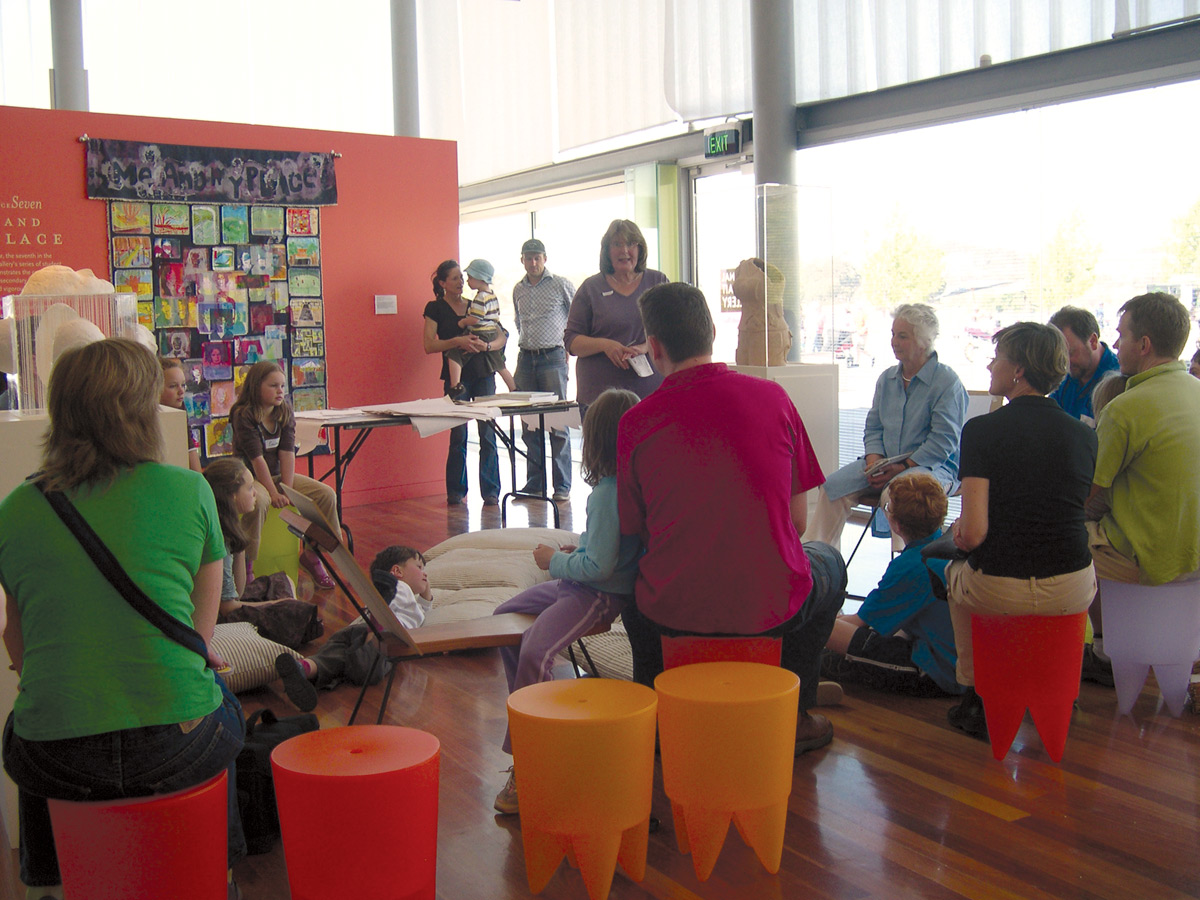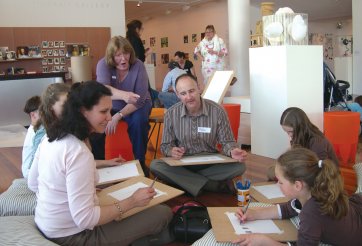The Guild of St George, a small charity founded by John Ruskin, launched The Campaign for Drawing in 2000, to celebrate the centenary of John Ruskin, the nineteenth century artist, critic and educationist.
The aim was to raise awareness of drawing’s power to enable us to understand, to think and to do things. In the last six years, The Campaign has raised the profile of drawing and promoted its use as a tool for thought, creativity, social and cultural engagement. Drawing is seen not just as a practical skill confined to art and design education in schools, but as an intellectual activity that can be used to foster learning and creativity in a variety of cultural settings. These include museums and galleries.
In the UK, there has generally been poor communication between the education and cultural sectors and the tendency is for museums, galleries and heritage sites to rely on standard interpretation practices, such as guided experiences or kits, packs and other published resources, to help people make the most of their visits. Against this background, The Campaign for Drawing has advocated more active methods of engaging the public with collections, exhibitions and sites. Drawing can transform visitors from being treated as passive consumers to being supported as active viewers. A key idea underpinning the Campaign for Drawing in all its programmes is the importance of drawing as a medium for learning.
One of these, The Big Draw, is an annual event, a month-long celebration of drawing in October, to raise the profile of drawing and encourage its use in a wide range of cultural and community settings. Drawing activities are organised for the public in all parts of the UK, with coverage on national television, radio, newspapers and online. It highlights the value of drawing in extending access to museums and galleries, in attracting family audiences, and in promoting active engagement with collections and exhibitions. Participation in the Big Draw has increased from 180 organisations in 2000 to 1200 in 2005. By extensive publicity in national and regional media, the Big Draw has influenced year-round gallery and museum programmes by proving drawing’s value as a crosscultural and cross-generational tool for active participation. It has created a positive and informed public perception of drawing as engaging and exciting, particularly in museums and gallery settings, as well as on heritage sites.
This idea has been adopted by Drawing Australia, which has promoted its own Big Draw, inspiring over 80 events in a variety of settings around Australia in 2006. As part of this, I was pleased to collaborate with colleagues at the National Portrait Gallery in Canberra, on a workshop for families. Participants took as their inspiration the exhibition of young people’s portraits, Headspace. After initial experiments to decide on an approach and appropriateness of media, children and their parents worked together to interpret notions of family and family life to construct a family portrait – but with the added challenge of omitting facial features! Inventive solutions included representations of clothes on a washing line, the breakfast table, a family outing to the bush and a walk along the beach showing the different sizes of family members’ footprints.
Drawing is generally seen as a personal and private activity, but it can also be public and collaborative and prompt shared reflection. Power Drawing, the education programme of The Campaign for Drawing, promotes the use of drawing to encourage active engagement with art, artefacts and environments. Perceiving ourselves as creators and makers generates knowledge and understanding that is different from that of mere onlooker, viewer, witness or member of an audience. It enables us to understand and value the thoughts and feelings of others more fully. It permits us a view of the world that is not blocked by the person with the big head in front of us and we are not constrained by the programme on offer.We can make our own. We can shape and give voice to our own ideas.
In addressing policies of access and inclusion, I suggest that we lose our obsession with audience, with number crunching of visitors to museums and galleries and with bums on seats in theatres, and pay more attention to the type and quality of experience that people have once they have crossed the threshold. We need to avoid thinking only about commodification and consumption in the arts, and place more emphasis on making and doing to prompt thinking. The need is to develop a more robust educational perspective that is clearly articulated and well supported. We should encourage more active ways of engagement, of interpretation and taking inspiration from our cultural heritage to think about who we are, how we choose to live and the meanings we construct about ourselves and our lives. The experience of making family portraits was a first step in this direction for young visitors to the National Portrait Gallery.















